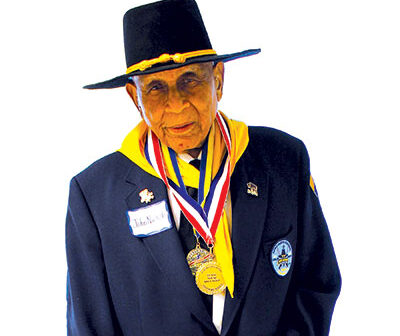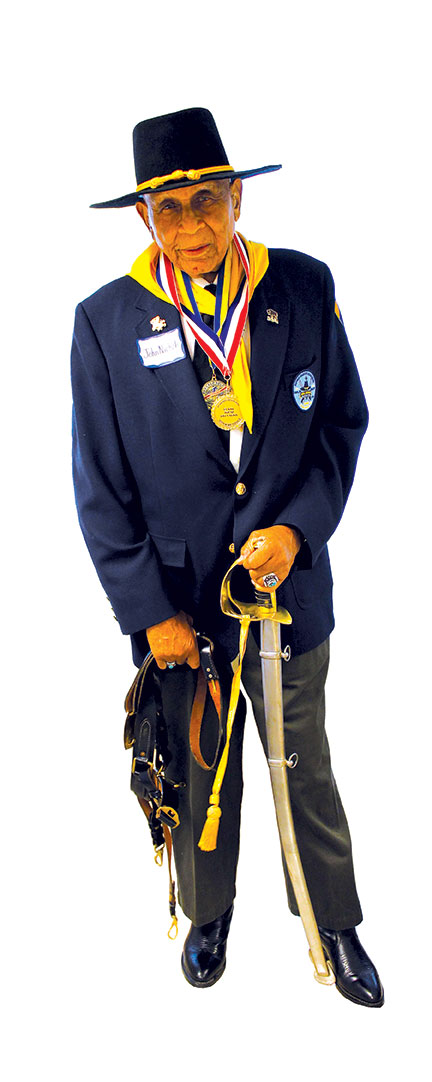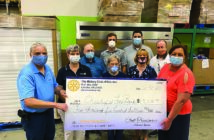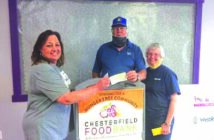They are called the “Greatest Generation”: those who were born early enough to endure both the depression and World War II.
Some of those men and women, who have now lived into their late 80s and 90s and fought in WWII, were honored last week by the Kiwanis Club of Chester. The soldiers were contacted though a sort of network. After being contacted by the club, one former service member would tell organizer Dr. Joe Hillier about friends who also fought in the war, and the number who would gather for dinner and recognition at Chester Presbyterian Church grew to 45. After as many as 10 of those invited had to decline at the last minute, attendees at the event narrowed to 35.
“What a great event,” Kiwanis memberTom Sokol said when the event came to a close. “These guys deserve it.”
Sokol interviewed each of the veterans in attendance. One interviewee, Stan Orchel, First Lt. U.S. Army, said he served “in the Philippines, Isle of Leyte, Battle of Manila and in the islands also. I was on Corregidor when the president dropped the bombs. Then I came home, spent 18 months in hospitals.”
Tom Brokal, who coined the term the “Greatest Generation” said it best in his book “The Time of Their Lives,”: “The nation turned to its young to carry the heaviest burden, to fight in enemy territory and to keep the home front secure and productive. These young men and women were eager for the assignment. They understood what was required of them, and they willingly volunteered for their duty.”
Brokal echoed the sentiment of FDR who said “This generation of Americans has a rendezvous with destiny.”
The veterans at the ‘We Remember: Our World War II Vets’ event, with a special recognition address by Brigadier General Manual R. Flores (Ret.), honored those who served the U.S. and kept it safe from formidable enemies.
“You served in the big one,” Gen. Flores said. “World War II was the pinnacle of what this world is all about. World War II identified us as a power having achieved respect from the rest of the world, and a friend they could go to for help whenever they needed. After that we had other conflicts like Korea, but none like what the big one was.”
Gen. Flores said he had heard and read in history books that there were not protests, but that everyone pitched in and did what they thought would help the country. He said there is nothing we can do to appreciate our veterans although we can try, we are not doing a good job.
Each veteran sat with their wife or caretaker as the General went from one veteran to the next presenting a special medal to each. Sokol interviewed each as they were honored by the general and the Kiwanis.
In the movie “The Best Days of Our Lives,” which represents how the Veterans coped after the war, the character Al Stephenson tells the story: “One day in Okinawa, a major comes up to me and he says, “Stephenson, you see that hill?” “Yes sir, I see it.” “All right,” he said. “You and your platoon will attack said hill and take it.” So I said to the major, “But that operation involves considerable risk. We haven’t sufficient collateral.” “I’m aware of that,” said the major, “but the fact remains that there’s the hill and you are the guys who are going to take it.” So I said to him, “I’m sorry, major… no collateral, no hill.”
As the veterans accepted their medal during the event, they each related a small story of their experience during the war.
Socol, who interviewed the veterans, said he had just returned from Normandy, where American soldiers landed on June 6, 1944. “Quite impressive,” he said. Socol said he had researched the history of each and every vet at the event so that he could be “worthy to stand in front of you and introduce you to our Kiwanians who so much appreciate what you had done.”
Pat McAlister, Sgt. 1 Class, U.S. Army, “I served mostly in World War II and was in the Battle of the Bulge, and I also served in Korea.”
Newell Langford, CMDR U.S. Navy, “Aleutian Islands: I spent most of my time on a little island called Akutan and bombing Japan. Crossed the China Sea and dropped bombs on …”
As Sobol introduced Earl Tatum, Sgt. U.S. Marines, he said, “You never mess with the Marines, even if they’re 90 years old. Where did you serve, sir?” “In the South Pacific. Started out on Guadalcanal, September of ‘42, fought on the… and then ‘43 November it was Tarawa, Gilbert Islands, and that was the nastiest one-square-mile island you’ll ever see.”
Roy Hannuksela, Pvt. 1st Class U.S. Army, began his service in Colorado and Texas and soon was moved to the Pacific Theater. Afterward he was part of intelligence in Europe. He said, “It was cold there… and after a long time I got caught, but I remember when I was in that gulag in Germany… and the guy says if you tell us the truth… so I said I don’t know anybody, and I had been in Germany for a while, and I knew some German.” He said one of the men said something, and the Germans didn’t like, and it and the man [German soldier] next to me hit with his rifle.”
The veterans, who fought from Europe to the Pacific, had stories of the fog of war, of hardships in the cold and the heat of the islands. But they came back with more than medals; they returned to their families, sometimes quiet and other times with stories of the horrific battles that were WWII. After 75 years, these men have come to terms with the Big War, proving they are the Greatest Generation.




